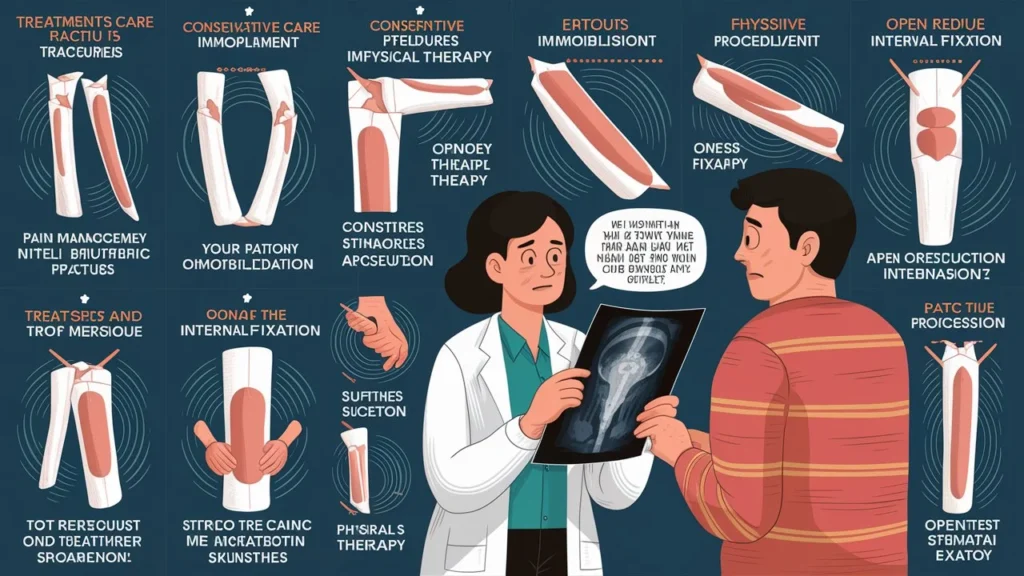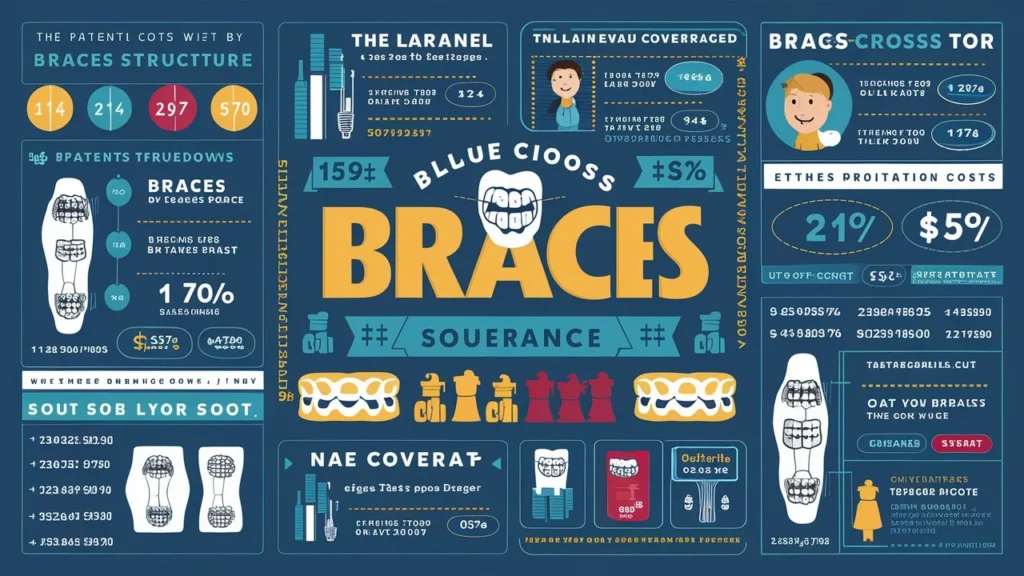Your smile and self-esteem might take a dramatic leap forward after getting your teeth straightened. However, the cost of braces can be relatively high. In such a case, dental insurance might be helpful to.
This piece delves into:
- Whether Blue Cross dental insurance covers braces
- The types of orthodontic treatments covered
- Cost considerations with Blue Cross plans
The choice to have braces is significant. Before you do anything, be sure you know what your insurance covers. By doing this, the actual costs won’t come as a surprise to you. We’re here to help you understand your Blue Cross dental coverage, how to file a claim, and how to save money. In conclusion, you will better understand whether Blue Cross is your best orthodontic option.
Understanding Dental Insurance and Orthodontic Coverage

Insurance for dental work can help defray some of the expenses. Major operations like orthodontics and regular cleanings and fillings fall under this category.
Dental plans come in various forms:
- PPO (Preferred Provider Organisation) Plans: You can visit any dentist but pay less for in-network providers.
- HMO (Health Maintenance Organisation) Plans: You must visit in-network dentists, except for emergencies.
- Indemnity Plans: You can visit any dentist, and the plan pays a set portion of the costs.
Dental insurance frequently covers orthodontic procedures, such as braces. These straighten up crowded or misaligned teeth. Here are some common orthodontic treatments:
- Metal Braces: stainless steel brackets and wires gradually shift teeth over time.
- Ceramic Braces: Less visible than metal, made of tooth-colored ceramic brackets.
- Lingual Braces: brackets attached to the back of teeth, hidden from view.
- Clear Aligners: removable, transparent plastic trays (like Invisalign) that straighten teeth.
- Retainers: wire or plastic trays that hold teeth in place after braces.
The majority of insurance plans partially cover braces for kids and teens. Policies that cover adults are not as standard. Proposals could include:
- Age Limits: Cut-off ages for full coverage, like under 19,
- Waiting Periods: You must have the plan for 6–24 months before qualifying.
- Lifetime Maximums: A capped amount the plan will pay for orthodontia, like $1,500.
Understanding these orthodontic benefits is essential when deciding on a Blue Cross dental plan.
Blue Cross Dental Insurance Plans and Orthodontic Coverage

Several dental insurance policies provided by Blue Cross cover orthodontic treatment, including braces and clear aligners. However, the specifics could change depending on your strategy.
Dental PPO options from Blue Cross: You can see any dentist or orthodontist with these plans, but keeping to in-network services will reduce your out-of-pocket costs. Regarding the coverage for braces:
- Most plans cover a portion of the costs for children under 19
- Some plans extend coverage for adults, too, but with lower lifetime maximums
- You’ll likely need to meet a waiting period of 6-12 months before coverage kicks in
- Typical coinsurance levels are 50% for in-network, 30-40% out-of-network
Dental health maintenance organization plans offered by Blue Cross
Unless it’s an emergency, you can’t get benefits from these plans unless you go to doctors who are part of their network. Some orthodontic plans may cover the following:
- There are no age limits, with coverage for children and adults
- There are no waiting periods for orthodontia in some cases
- Higher coinsurance levels, around 50-70% after meeting your deductible
- Negotiated rates with in-network orthodontists for lower overall costs
Plans for Blue Cross Indemnity and Fee-for-Service: While these more conventional plans are losing popularity, they are still available in certain regions. What they offer is:
- Coverage for any orthodontist, not limited to a network
- Flexible orthodontic benefits, often 50% coinsurance
- Out-of-pocket costs based on your plan’s allowable charges
No matter the plan, most have limitations, like lifetime maximums of around $1,000-$2,500 for braces/aligners. Some plans exclude coverage for clear aligners like Invisalign. Review your plan details carefully regarding orthodontic exclusions and limitations.
Cost Considerations for Braces with Blue Cross Insurance

Brackets can be somewhat expensive. Blue Cross insurance prevents you from paying as much out of pocket for dental care. However, you should still budget for some personal expenses.
Traditional metal braces can increase the expense of orthodontic treatment by an average of $3,000 to $7,000. You should count on spending between $4,000 and $8,000 on ceramic braces. The average price range for a clear aligner system, such as Invisalign, is $3,000 to $8,000.
You’d have to pay the total price if you didn’t have health insurance. However, a Blue Cross dental plan covers some of the cost once your deductible is met.
Here are a few examples of common provisions for cost-sharing:
- Deductible: the amount you pay before coverage begins, like $50 per person.
- Coinsurance: You pay a percentage (40-50%), and insurance covers the rest.
- Copays: fixed dollar amounts you pay per service, like $25 for an office visit.
Your orthodontic coverage level and the provider’s participation in your plan’s network determine your out-of-pocket expenses.
If your plan covers half of the cost of braces ($5,000 total) after a $50 deductible, for instance:
- In-Network: You’d pay $2,525 ($50 deductible + 50% coinsurance of $4,950)
- Out-of-Network: You may pay $3,500 (deductible + 40% coinsurance if lower coverage)
Use a tax-advantaged account, such as a flexible spending account (FSA) or health savings account (HSA), to pay for your orthodontic treatment with an in-network provider.
You should get braces, no matter how much they cost. Making the most of your Blue Cross benefits can help you afford treatment.
Read More: Insurance car rental in Duncanville, Panggon
Navigating the Claims Process

Getting braces covered by your Blue Cross dental plan requires some upfront paperwork. Here’s what to expect when navigating the claims process:
Pre-Treatment Estimates Before starting orthodontic treatment, your orthodontist should submit a pre-treatment estimate. This allows Blue Cross to review the proposed treatment plan and costs. They’ll provide an estimate of your coverage and out-of-pocket expenses.
Getting pre-approval gives you a clear idea of costs. It also ensures your expenses will be covered as stated, avoiding surprise bills later.
Filling Claims Forward After each stage of braces treatment is completed, your orthodontist will typically submit claims to Blue Cross. Common treatment tiers include:
- Initial appliance placement
- Monthly adjustment appointments
- Final adjustments before removal
The orthodontist will file a claim outlining the services rendered for each stage. Blue Cross will then handle the claim following your plan’s coverage.
If you must pay the orthodontist’s fees in advance, retain copies of all receipts and claims.
Harmonization of Advantages The coordination of benefit regulations comes into play if you have two dental policies covering you. There is a basic insurer and a secondary insurer.
Assuming sufficient coverage, the primary plan will pay out first. The secondary plan may cover your remaining out-of-pocket payments.
Procedure for Filing Appeal
Blue Cross may choose not to pay out on a claim, depending on the circumstances. If your claim is refused, you can submit the necessary paperwork from your orthodontist to appeal the decision.
Ensure you’re ready to articulate your case and explain why you think your plan should pay for the treatment. If your legitimate claims were initially denied, you may be able to get them reimbursed through the appeals procedure.
Make sure you get the most out of your orthodontic benefits from Blue Cross by following this method to the letter.
Alternatives to Dental Insurance for Braces
There are other options outside of dental insurance, like Blue Cross, that can help cover the cost of braces. Here are several alternatives to orthodontic coverage:
Making a Direct Debit Paying for braces out of pocket, without insurance, is the easiest option. Most orthodontists provide payment options to help patients budget. Avoiding dealing with insurance approvals and maximums is worth the expensive upfront cost.
Paying the entire amount in advance might get you a 5–10% discount from many orthodontists. Another option to spread out the cost of braces is to get a personal loan specifically for medical expenditures.
Prepaid Dental Insurance These plans are not insurance but work with participating providers and offer dental discounts. A yearly fee of $100 to $200 can net you a 20% to 60% discount on the retail price of braces.
Even though they are less than insurance premiums, you still have to pay most of the costs. However, braces might be more reasonably priced with the help of orthodontist discounts.
The government offers grants and scholarships.
Medicaid and CHIP are health insurance programmes for low-income households with children. With both plans, you can get all the necessary dental care, including braces.
Orthodontic treatment is often covered when determined medically necessary, though this varies by state. Copayments and income restrictions are in place, but the total cost is minimal.
Medical Loans with Care Credit This healthcare credit card allows you to spread out the cost of orthodontic treatment, for example, and take advantage of reduced interest rates. The payment term is typically 6–24 months with no interest.
Spreading up the payments over the years makes the overall expense of therapy more manageable. Pay in full before the deferred interest period begins.
If you do not have Blue Cross or other dental insurance, these choices can help you pay for braces. Thoroughly assess your current financial status and all available options.
Tips for Maximising Orthodontic Benefits Tips for Maximising Orthodontic Benefits
Even with Blue Cross dental insurance, orthodontic therapy, such as braces, can still be costly. Make the most of your benefits while keeping costs low by following these tips:
- Coinsurance percentages for in and out-of-network providers
- Deductibles you must meet before coverage begins
- Lifetime or annual maximums for orthodontia
- Age limitations or waiting periods
Get to Know Your Plan’s Specifics: Review all the plan paperwork, especially the orthodontic coverage part. Important details should be noted, such as:
If you are aware of these details, you can prepare for possible out-of-pocket expenses. It safeguards against overspending or losing out on covered advantages.
Always Practice Proper Oral Care It is of the utmost importance to maintain good oral hygiene when undergoing orthodontic treatment. There are a lot of potential food and plaque traps caused by braces.
People who don’t practice good oral hygiene are more likely to develop gum disease, cavities, and other dental problems. These issues may result in prolonged treatment time and higher expenses.
Use an antimicrobial mouthwash, floss using orthodontic flossers, and carefully brush around your braces. It is essential to schedule frequent dental cleanings with your dentist.
Discover Reasonably Priced Treatment Choices Although most insurance policies typically cover traditional braces, there might be cheaper options. Blue Cross insurance typically pays for a portion of the cost of clear aligner systems like Invisalign.
Instead of spending time and money on braces, minor orthodontic abnormalities can be corrected with clear aligners. To discover cheap solutions, see an orthodontist about your alternatives.
Another option is to find an orthodontist willing to accommodate your budget through discounts or payment arrangements.
Maximise Your Deductions Orthodontic expenses can be paid with tax-free money from a Flexible Spending Account (FSA) or a Health Savings Account (HSA). You can save money because the cash flows in before taxes.
You can pay for years of orthodontic treatment at once with many FSA and HSA options. You can pay taxes by spending down your account balances.
You may get the most out of your Blue Cross orthodontic coverage with careful preparation and informed decisions. If you follow these recommendations, you may get the most out of your insurance and pay less out of pocket.
Conclusion
Getting braces to straighten your teeth is a smart choice for your smile’s health and confidence. Despite the high expense, Blue Cross dental insurance offers important coverage for orthodontics.
Look over the fine print of your plan to ensure you understand your coinsurance, deductible, and lifetime maximums. Knowing what is covered in advance can help you prepare for out-of-pocket costs.
Get estimates before treatment, choose in-network providers, and save money with tax-advantaged accounts. Taking excellent care of your gums and teeth might decrease your treatment costs.
If Blue Cross orthodontic coverage doesn’t work for you, consider other options, such as discount plans, medical finance, or government aid programmes.
Regardless of your decision, getting braces now will ensure your teeth remain healthy and straight for the rest of your life. Don’t allow financial concerns to prevent you from getting the smile of your dreams.
To begin exploring your treatment and insurance possibilities, contact Blue Cross or make an appointment with an orthodontist immediately. With little preparation, getting braces can be economical.

Justin Taylor is the creative force behind Insuranted.com, a premier destination for insightful and trustworthy insurance information. With a dedication to demystifying insurance complexities, Justin strives to equip readers with the knowledge they need to make smart, informed decisions.










